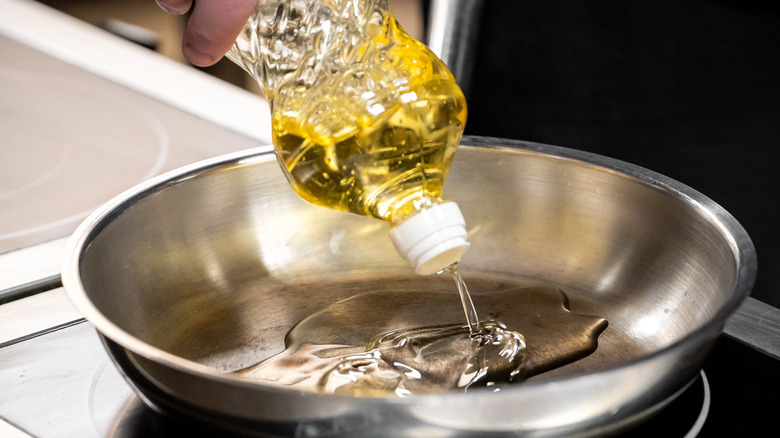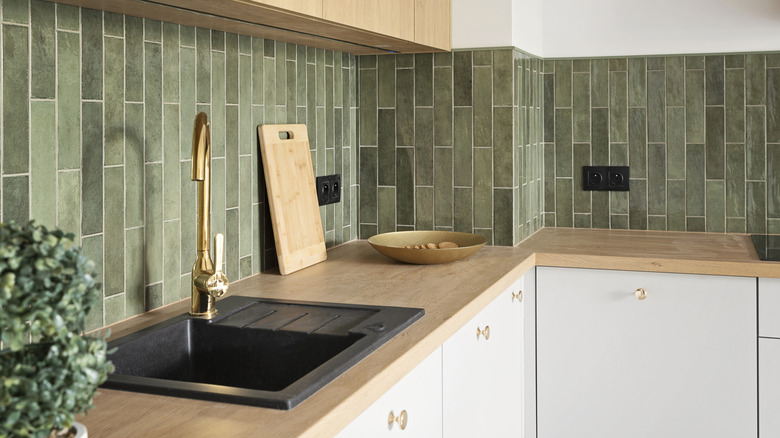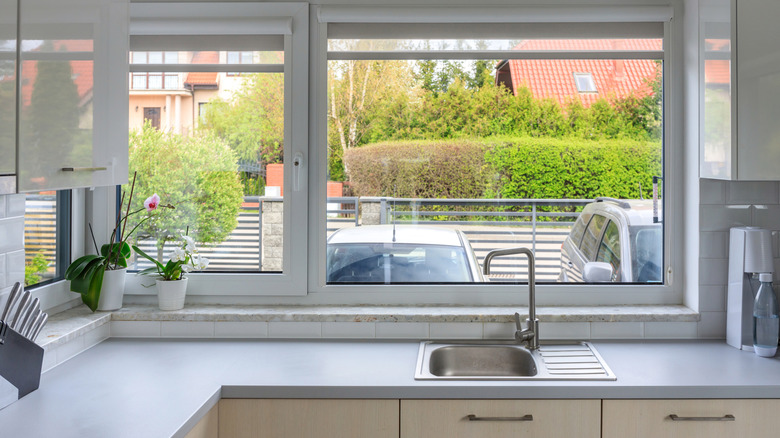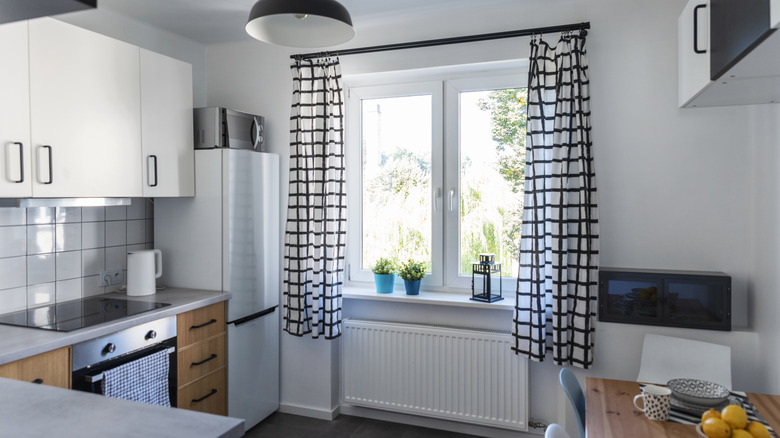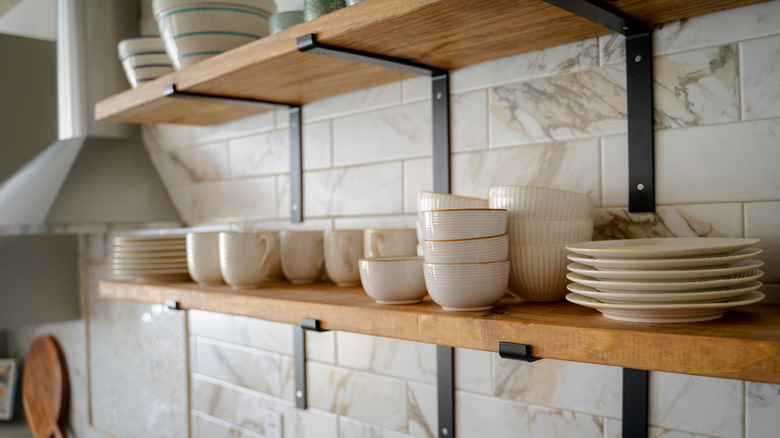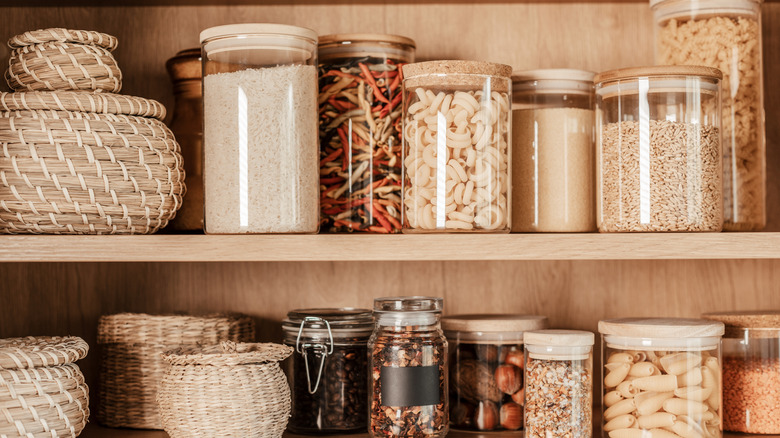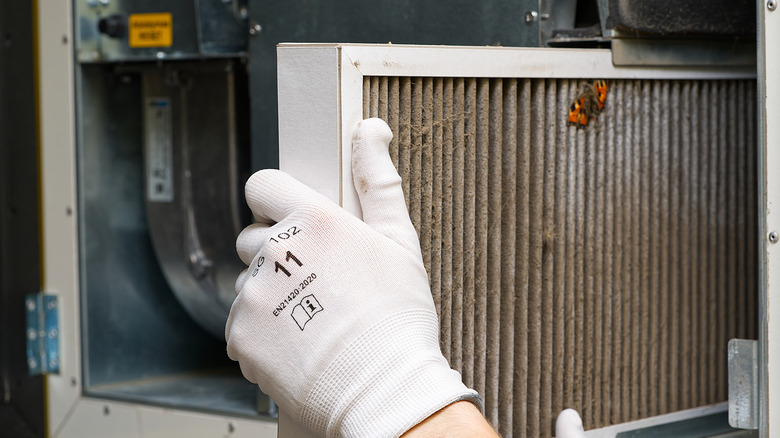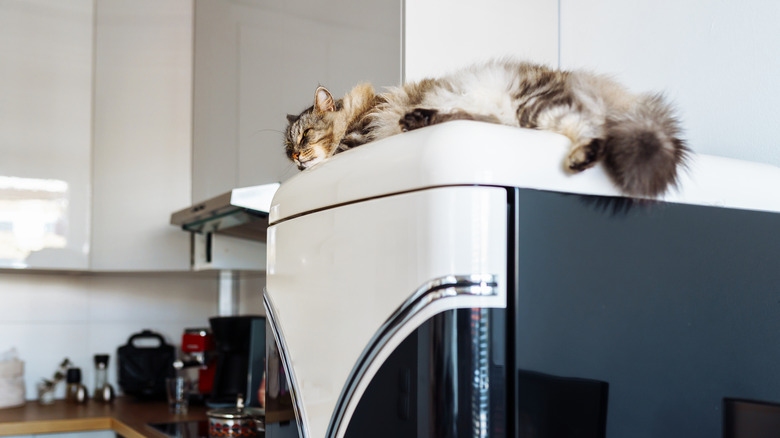Why Is My Kitchen So Dusty? 10 Reasons And Some Quick Fixes
Kitchens are among the dirtiest rooms in any home. With the constant use for cooking and food preparation, some form of mess is always bound to happen, including food spills, grease splatters, dishes piling up, and more. While these issues are easy to spot and address, there's one type of mess that's constantly building up in the kitchen, but often gets overlooked. Unlike grease, stains, and food, dust seems to appear out of nowhere, and you only notice it when you take a closer look at your cabinets, shelving, light fixtures, and even the appliances you regularly use.
Compared to the dust settling in your bedroom, the kind that your kitchen collects is usually a mix of food particles, grease, pet dander, and dirt from the outdoors. Because cooking generates heat and affects air circulation, this admixture of dirt may travel faster and stick to surfaces more stubbornly, giving you a hard time keeping your kitchen space neat and clean. Aside from making your kitchen look dirty, such dust can also affect air quality, making your food prep area less sanitary. In case you are wondering where all of these dirt particles are coming from, here's a breakdown of the 10 common causes of dust buildup in the kitchen and some practical fixes to help you address each problem.
Oil or grease in the air
When frying or sautéing, you may notice tiny grease particles splatter all over your cooking area. These particles can mix with dust and then stick to your countertops, cabinets, shelves, and even walls. Over time, this will create a sticky film that will attract even more dirt. Therefore, if your kitchen is always active and busy, it's inevitable that grease will contribute to dust buildup. Regularly wiping down the surrounding surfaces of your stove with a grease-cutting cleaner is a good remedy for this issue. Using a budget-friendly splatter screen to stop cooking oil from creating a mess is also recommended.
Poor ventilation
If your kitchen always feels damp and smells bad, it's one of the telltale signs that your kitchen has poor ventilation. Without proper ventilation, smoke, grease, humidity, foul odors, and heat can linger for long periods. Alongside these, dust particles can also freely move around and settle with the trapped steam or heat, causing your space to readily get dirty. One simple solution is to open the windows while cooking. If you have limited space or no window by the kitchen, have a range hood or exhaust fan installed to ensure good airflow. Just remember to clean the filters regularly.
Open windows or doors
Opening the windows or doors when cooking is a great idea, but leaving them open for long can also be a reason for dust to enter your kitchen. Aside from dust, this invites pollen and other forms of outside dirt to go inside and settle on your kitchen surfaces, including counters, appliances, shelves, and possibly even inside your cabinets. In case you don't know, dust particles come with hidden hazards. They can irritate your throat, eyes, nose, and lungs, and they may even carry bacteria and viruses. To prevent this from happening, only open your windows and doors when needed, or install screens to filter dust and dirt. Regularly vacuuming near the entryways also helps.
Kitchen fabrics
Like any other room in the house, kitchens are also a commonplace for fabrics. Aside from rugs and dish towels, kitchen spaces with windows and glass doors are often outfitted with fabric curtains for both decorative and practical reasons. Unbeknownst to you, aside from trapping dirt, these textiles shed tiny fibers that can circulate and land on surfaces. Such fibers can then attract dust and cause dirt to accumulate. A quick fix is to wash your kitchen fabrics regularly. Shake out rugs outside before cleaning, so the dirt doesn't come back. It's also wise to invest in lint-free towels.
Open shelving
It's one of the most stylish storage options for kitchens, but there are definitely things to consider when you have open shelving. One is how these surfaces can be a breeding ground for dirt and germs, since they are completely exposed to the open air. As mentioned earlier, cooking can lead to grease and oil splatters, while leaving the doors and windows open can invite outdoor pollutants. All of these lead to dirt settling on surfaces, and open shelving is one easy target. Regularly wiping and cleaning these shelves is an effective way to eliminate dust buildup. Or, you can prevent this altogether by simply opting for enclosed cabinetry.
Pet dander and hair
Having pets around the house brings a unique kind of joy to homeowners. However, their fur and dander can heavily contribute to dust buildup, especially in the kitchen, where dogs and cats often eat their meals. These animals constantly shed hair, which can accumulate on the floor and counters, and then trap dust, pollen, and allergens, potentially triggering allergic reactions. If keeping your pets out of the kitchen is not possible, you can try different ways to get rid of pet hair, such as regularly brushing your pets or using lint rollers. If you have money to spare, you should also invest in a robot vacuum suited for your home.
Panty supplies and food debris
When you have a pantry system that works hard and keeps things organized, you'll have no problem stocking up on different kitchen essentials. However, when transferring dry foods like flour, sugar, spices, and cereal into containers, fine particles from these food items get released into the air. This also happens whenever you take these containers to your food prep area and open them to get the amount you need for a recipe. These particles mix with dust over time and form a powdery layer on your shelves, countertops, and even floors. To remedy this, always store dry goods in sealed containers and wipe your pantry shelves as often as possible. Clean up any spills immediately to prevent dirt from building up.
Dirty HVAC filters
One of the most common home mistakes that diminishes the air quality inside the house is the infrequent cleaning and changing of HVAC filters. These filters play an important role in your home's heating and cooling system, which facilitates the airflow throughout your house — especially in the kitchen — all year round. If your HVAC filter is clogged or dirty, dust particles get pushed into the room, causing everything to look dusty and smell foul. The solution to this is to regularly clean the filters and schedule replacements every three to 12 months, depending on the model and quality of the filter. Invest in high-efficiency filters, as these can trap more dirt particles.
High foot traffic
As one of the busiest rooms in the house, kitchens almost always record the highest foot traffic throughout the day. That's why one of the rules to follow when designing a new kitchen is to maximize functionality, while reducing traffic jams when multiple people are in the space. Constant activity and movement keep dust stirred up, causing it to circulate in the air. Not only that, but shoe tracks can leave behind mud, tiny rocks, and soil, which can also contribute to the dust particles floating around. If you don't want any of these messes in your kitchen, sweep or vacuum the floor daily and place doormats at the entryways.
Neglected areas in the kitchen
Some areas in your kitchen are so neglected that you only get to clean them once in a blue moon. We're talking about the tops and bottoms of your cabinets, range hoods, refrigerators, and other tall or hanging appliances. Since these are high up or very low, and often out of reach, they are some of the hardest spots to clean in your kitchen. Thus, they become prime areas for dirt accumulation. The best way to handle this issue is to make dusting part of your weekly routine. Also, don't forget to clean above, behind, and underneath your appliances and furniture every few months, and as much as possible, deep clean your kitchen whenever you have a lot of free time.

